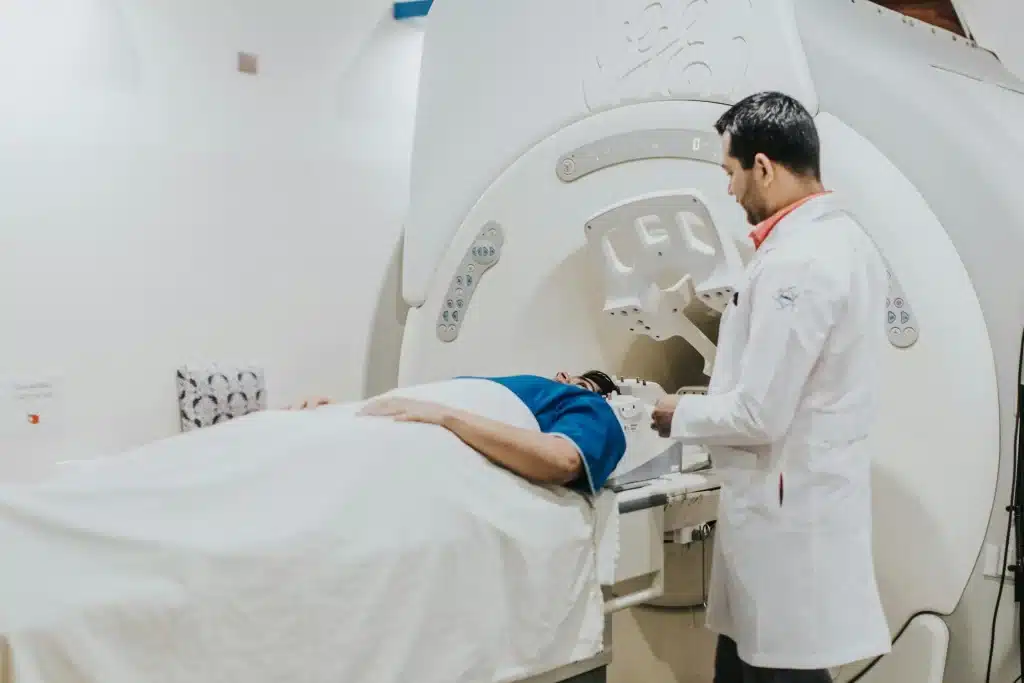People will always fret and worry whenever their loved one’s illness is affecting the head or if they have traumatic brain injuries (TBIs). Often, sufferers need medical care focus since some cases may lead to long-term complications.
That’s why it’s best to explore how tech works, especially for diagnosing brain injuries, so you can at least get a grip on your or loved one’s TBI standing, medically and legally.
Advanced TBI Diagnostic Tools: The Growing Need
How complex is TBI
TBIs may not be common, but when you’re one of the sufferers, the fear of their risks can be quite overwhelming. They’re typically caused by sudden impact, jolt, or blow to the head, either due to non-observance of personal safety at work or real-deal accidents.
Even if you’re wearing head protection when the accident happened and your head somehow suffered, it’s still best to be thoroughly checked.
Since your brain’s function is delicately intricate, any injury therein is all the more worrisome and medically complex. You’ll never know your real concerns, whether they’re just minor or alarmingly severe unless you get tested or examined.
Innovations in Brain Imaging: Enhancing Accuracy and Speed
Today’s Magnetic Resonance Imaging (MRI) and Functional MRI (fMRI)
The most advanced and widely used tech in diagnosing brain injuries these days is magnetic resonance imaging (MRI). It used to be traditional MRI scans that could give your doctor detailed images of your brain’s structure and detect any physical damage like bleeding or swelling.
However, today’s trend is also using functional MRI (fMRI), taking a step further and deeper into the look of your brain, like:
- Measuring your brain’s activity in real-time
- Allowing for the detection of more subtle injuries
- Detecting non-visible problems after a standard MRI scan
Computed Tomography (CT) Scans
This brain damage detection tool remained the staple in emergency rooms, especially its ability to quickly detect severe brain injuries like hemorrhages, skull fractures, or swelling. While they may not be as detailed as the MRI, the CT scan’s speed makes it quite dependable in life-threatening situations where immediate decisions are particularly critical.
Diffusion Tensor Imaging (DTI) Technique
Riding the new wave of medical tech, diffusion tensor imaging (DTI) is now used to track your brain’s white matter pathways, usually disturbed in TBI cases, so your doctor can comprehensively diagnose your situation. DTI can be particularly helpful in identifying subtle brain injuries that are often experienced in sports-related concussions.
Legal Implications: The Importance of Accurate Diagnoses in TBI Law
Expert Testimony Based on Technological Evidence
A doctor’s specialized knowledge and expert testimony regarding your brain injury can give weight and support your case. But medical professionals can’t just appear in court and “talk” about your symptoms; they need tech’s ability to show clear, technology-backed evidence like MRI, CT, or DTI results.
The need to support and give concrete evidence to your doctor’s testimony makes these technologies or advancements quite invaluable in today’s legal proceedings, TBI law, and your injury claims.
This is also where you need a TBI lawyer, especially in states like Indiana, where you need an expert in brain injury claims who could guide you to unearth needed proofs and offer knowledgeable support, especially with:
- The state’s statute of limitations requirements or conditions
- Their fault rules and legal bases
- The state’s damage caps on medical malpractice claims
- Ensuring you can get fair compensation and rightful compensation
Accurate Diagnosis in Personal Injury Claims
Whether it’s due to a car crash, a mishap at a construction site, or a sporting event, you need reliable medical results and documents for your personal injury claims. A deficient or refutable analysis can cause the denial of your case; you might even suffer an unfair settlement or inadequate compensation for your injuries.
Portable Tech: Taking Diagnostics Beyond the Hospital
Some Point-of-Care Devices for Immediate Testing
Today, handheld devices already use infrared lights to detect brain bleeds. These tools have become quite valuable in ambulances, sports fields, and military installations. They can offer immediate results of the status or severity of a brain injury, usher more accurate medical care, and avoid further damage.
Wearable Sensors for Athlete Monitoring
Today’s wearable sensors, like impact sensor helmets, are making huge steps in the early detection of TBIs, making timely treatment available, and preventing long-term damage and suffering like chronic traumatic encephalopathy (CTE).
These devices can measure the force of a blow or hit to the head, sending real-time data to medical staff and ensuring prompt action to reduce further damage or injury to the athlete.
The Role of AI in Diagnosing Brain Injuries
The AI-Powered Imaging: Faster, More Accurate Diagnoses
Today’s artificial intelligence (AI) is gaining momentum in diagnostic imaging tools, providing faster and more accurate brain scan interpretations. Its algorithms analyze extensive brain data, identifying patterns (no matter how small) that can reveal brain injury.
With AI-aided scans, results speed up diagnosis, improve accuracy, and reduce human misappreciation, especially in TBI incidents.



